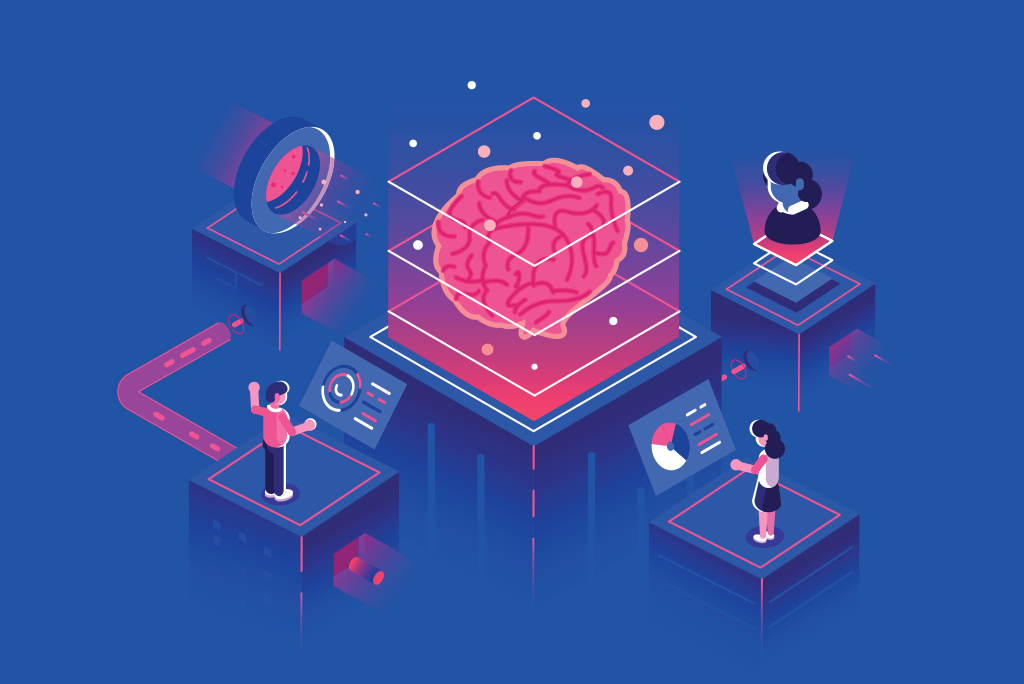
In recent years, artificial intelligence (AI) applications have exploded in popularity. A few examples include text editors, facial recognition systems, digital assistants, and much more. Simply put, AI is the ability for machines to perform tasks that require a certain level of intelligence. As an overarching branch of computer science, AI contains a number of subsets, two of the most common are machine learning and deep learning.
What is Machine Learning?
Machine learning algorithms are trained to parse data into bits, then recombine that data to learn and solve problems in order to make knowledgeable decisions. Machine learning systems are trained with structured data in which patterns are clearly defined. While machine learning models can get better at solving problems with limited supervision, they can still require some human guidance, especially if they get stuck on a problem.
Machine learning is commonly used in image and speech recognition, email spam detectors, and to predict shifts in weather and stock markets.
What is Deep Learning?
Deep learning is considered by many experts to be an evolved subset of machine learning. Whereas traditional machine learning systems rely on structured data, deep learning continually analyzes data using an advanced technology known as “artificial neural networks,” which can process unstructured data such as images. These networks are operated by a series of algorithms that can perceive complex relationships in data sets through a process that imitates the human brain.
Deep learning models are used by online retail companies and streaming services to suggest products and TV shows you might be interested in based on previous selections. It’s also used in facial recognition software and in autonomous vehicle systems.
Deep learning is a revolutionary technology that some “consider [to be] the backbone of true artificial intelligence.” Unlike traditional machine learning applications, deep learning models can analyze and solve a problem in a single instance, much like the human brain, and can get better at problem solving without human intervention.
GPT-3, CLIP, and DALL-E
Deep learning is propelling radical advancements in search engine technology and natural language processing (NLP) models—artificial intelligence that can automatically manipulate speech and text.
Last year, OpenAI, an AI research and deployment company, unveiled a breakthrough NLP model that applies deep learning to mimic human language. Known as Generative Pre-trained Transformer 3, or GPT-3, the system uses autocomplete technology, a feature in Google Search that can speed up searches by predicting what you are going to type next. (It does this by matching what you are typing to commonly searched for words and phrases).
Combining autocomplete technology with massive amounts of data gleaned from the internet, GPT-3 can generate text on its own. As an example, here is an article written by a GPT-3 application without human assistance.
Similarly, OpenAI recently built a pair of new deep learning models dubbed “DALL-E” and “CLIP,” which merge image detection with language. As such, they can help language models such as GPT-3 better understand what they are trying to communicate.
CLIP (Contrastive Language-Image Re-Training) is trained to predict which image caption out of 32,768 random images is the right caption for a specific image. It learns image content based on descriptions instead of one-word labels (like “dog” or “house”.) It then learns to connect a wide array of objects with their names in addition to words that describe them. This allows CLIP to identify objects within images outside the training set, meaning it’s less likely to be confused by subtle similarities between objects.
Unlike CLIP, DALL-E doesn’t recognize images—it illustrates them. For example, if you give DALL-E a natural-language caption, it will draw a variety of images that matches it. In one example, DALL-E was asked to create armchairs that looked like avocados, and it successfully produced a number of different results, all which were accurate. See a picture of the results here.
“The thing that surprised me the most is that the model can take two unrelated concepts and put them together in a way that results in something kind of functional,” Aditya Ramesh, one of DALL·E’s designers, told MIT Technology Review.
Making Deep Learning Cheaper, Faster, and More Efficient
While deep learning can deliver impressive results, it has some limitations. For example, it has vast data and mathematical processing needs that consume enormous amounts of energy. Deep learning also relies on more sophisticated hardware than traditional machine learning systems, in addition to requiring extensive data and lengthy training times.
However, engineers are working on innovative solutions to this problem. For example, Lightmatter, a company that makes next-generation computing platforms for artificial intelligence systems, has developed a neural-network accelerator chip that can make calculations more efficiently by using photons instead of electrons. While the technology isn’t currently as precise as today’s chips, it represents a step forward in the quest to make deep learning cheaper, faster, and more efficient.
As machine learning and deep learning models evolve, they are spurring revolutionary advancements in other emerging technologies, including autonomous vehicles and the internet of things.
Understand Machine Learning
Machine learning is a vital aspect of artificial intelligence (AI). Because machine learning allows AI systems to learn from experiences without needing explicit programming, it’s key for the future of AI technology.
Check out these new courses on machine learning, available on the IEEE Learning Network today.
Machine Learning in the Age of Enterprise Big Data
Machine Learning in a Data-Driven Business Environment
Machine Learning Algorithms, Models, and Systems Integration
Resources
Schneider, David. (8 January 2021). Deep Learning at the Speed of Light. IEEE Spectrum.
Douglas Heaven, Will. (5 January 2021). This avocado armchair could be the future of AI.
MIT Technology Review.
(17 December 2020). The Difference Between Deep Learning and Machine Learning. Tech Funnel.
(20 May 2019). Deep learning & Machine learning: what’s the difference? Parsers.
Grossfeld, Brett. (23 January 2020). Deep learning vs machine learning: a simple way to understand the difference. ZenDesk.


[…] discussed in a previous post, traditional machine learning systems rely on structured data. However, deep learning, which is […]
[…] machine learning algorithms are much better than humans at parsing out small patterns in massive data sets, they struggle to comprehend these minor causal relationships. However, a recent paper from […]
[…] such as implicit feature modification have the potential to give artificial intelligence (AI) the ability to learn on its own. Not only will this make AI smarter and more efficient, it can also lead to revolutionary […]
[…] now use natural language processing, 22% incorporating pattern recognition, and 21% integrating deep learning technologies, which are all types of machine […]
[…] toward improved mental well-being. In this study, the researchers developed a model based on deep learning, a type of machine learning that uses layered algorithmic architectures to analyze data. The […]
[…] artificial intelligence (AI), deep learning algorithms are designed to learn like a human brain. Deep learning continually analyzes data using an advanced technology known as “artificial neural networks,” […]